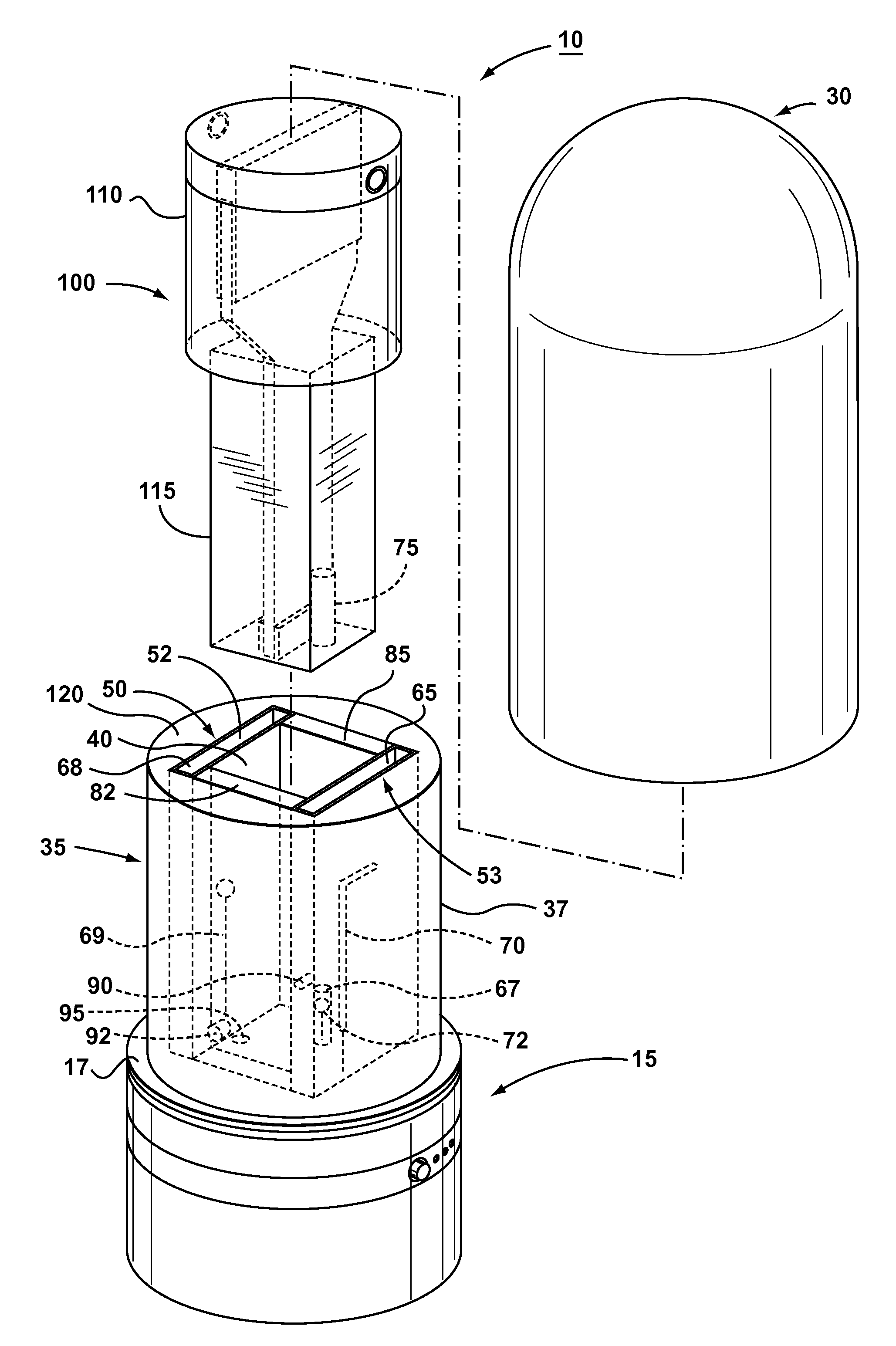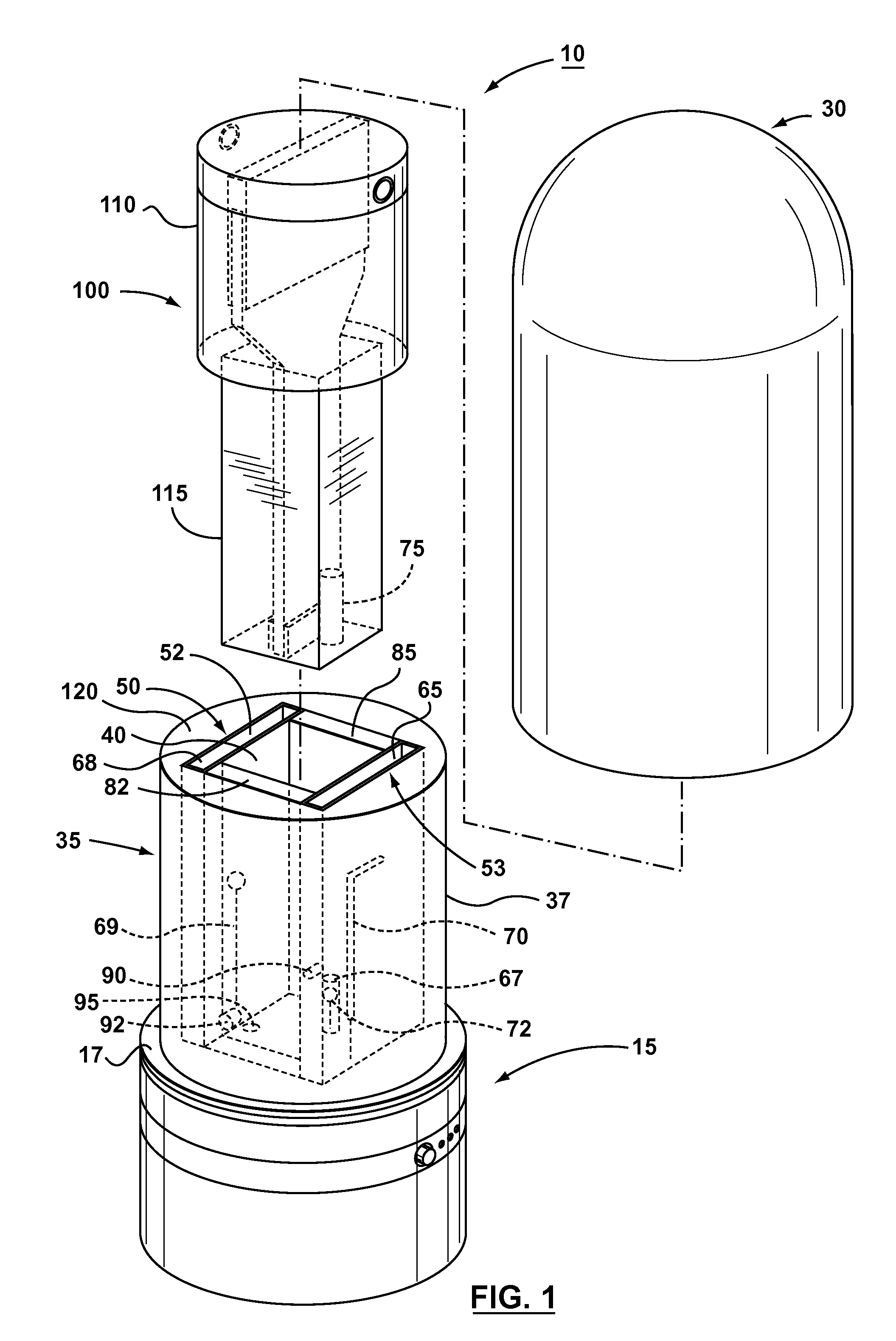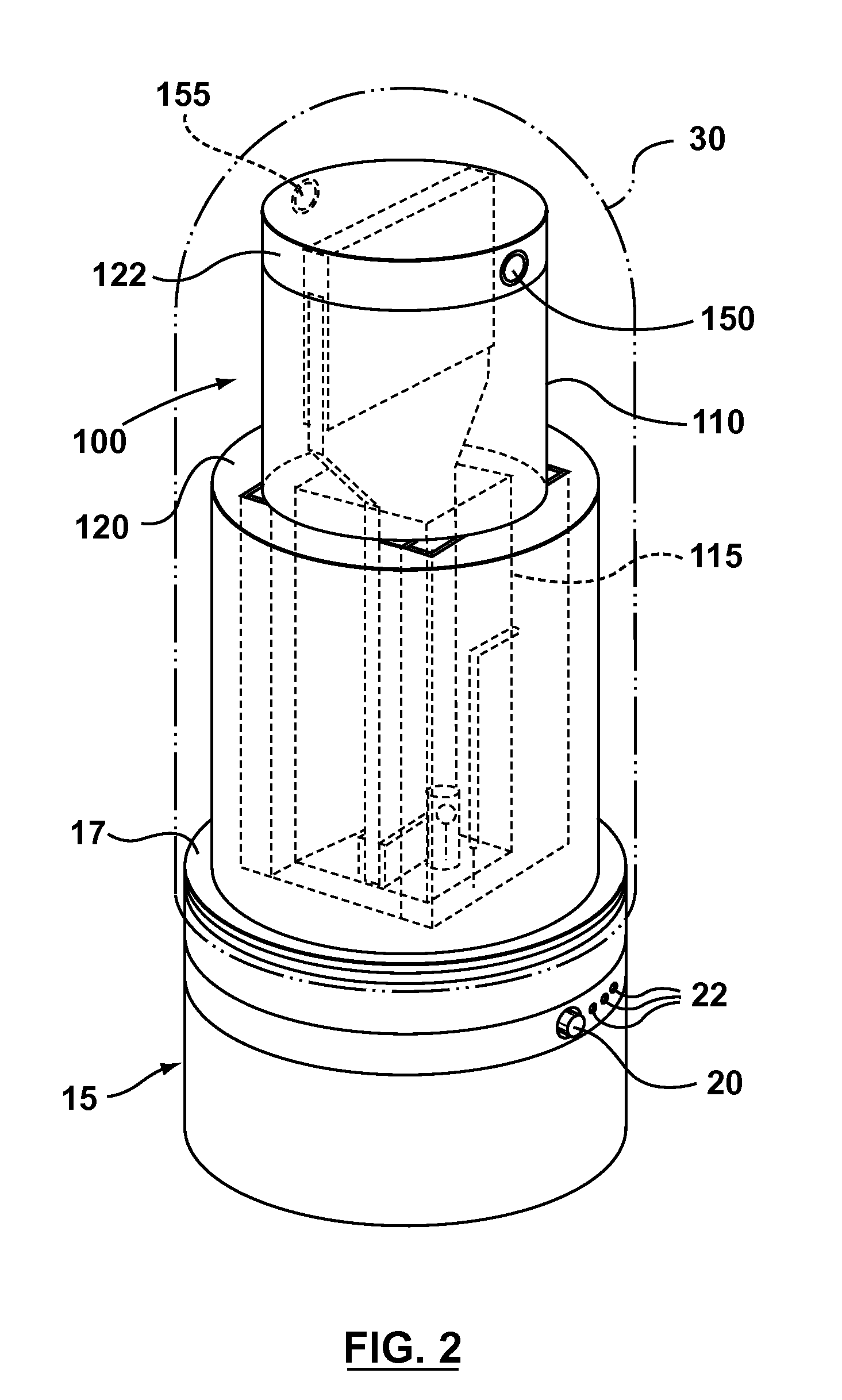Apparatus and methods for automated diffusion filtration, culturing and photometric detection and enumeration of microbiological parameters in fluid samples
a technology of microorganisms and fluid samples, applied in biochemistry apparatus, biochemistry apparatus and processes, laboratory apparatus, etc., can solve the problems of high error rate, standard membrane filtration method, and high microbial count of samples, so as to reduce light scattering and control the direction and flow rate
- Summary
- Abstract
- Description
- Claims
- Application Information
AI Technical Summary
Benefits of technology
Problems solved by technology
Method used
Image
Examples
Embodiment Construction
[0022]Referring now to FIGS. 1-6, illustrated therein is an apparatus 10 for photometric detection of microbiological parameters, made in accordance with an embodiment of the present invention. Apparatus 10 comprises a sample cuvette 100, a housing comprising a base unit 15, a cuvette holder 35 mounted on the base unit 15, and a removable lid 30 shaped for enclosing the sample cuvette 100 and the cuvette holder 35. The base unit 15 is generally cylindrical and the cuvette holder 35 extends upwardly from the middle of the top surface 17 of the base unit 15. The cuvette holder 35 has a generally cylindrical outside surface 37, and is provided with a centrally located sample cavity 40 shaped to accommodate the sample cuvette 100. The dimensions of the sample cavity 40 are such that when the sample cuvette 100 is placed in the cuvette holder 35, the sample cavity 40 provides a very snug fit for enhanced photometric detection.
[0023]As best shown in FIGS. 1 and 5, sample cavity 40 is gene...
PUM
 Login to View More
Login to View More Abstract
Description
Claims
Application Information
 Login to View More
Login to View More - R&D
- Intellectual Property
- Life Sciences
- Materials
- Tech Scout
- Unparalleled Data Quality
- Higher Quality Content
- 60% Fewer Hallucinations
Browse by: Latest US Patents, China's latest patents, Technical Efficacy Thesaurus, Application Domain, Technology Topic, Popular Technical Reports.
© 2025 PatSnap. All rights reserved.Legal|Privacy policy|Modern Slavery Act Transparency Statement|Sitemap|About US| Contact US: help@patsnap.com



